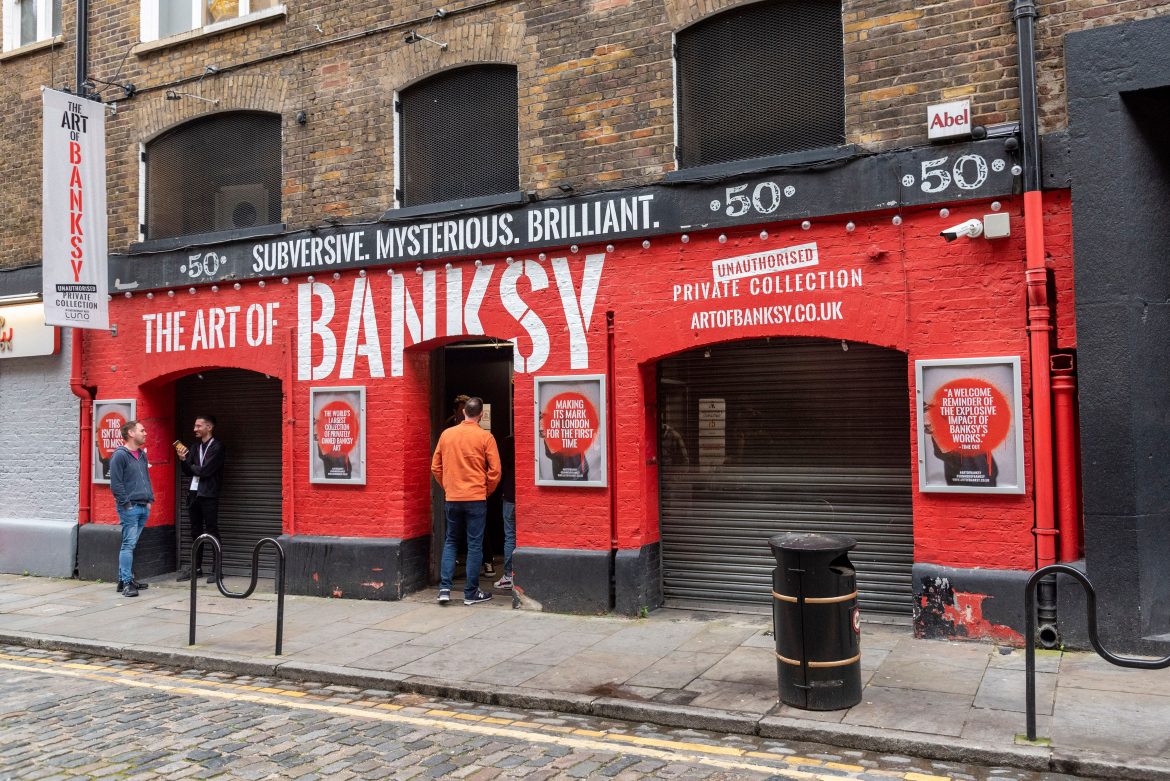‘The Art of Banksy’ has extended its stay in Covent Garden until May 2022. The exhibition, at 50 Earlham Street, is the largest ever collection of the graffiti artist’s works. It features over 100 original pieces taken from private collections.
The display has faced controversy as it has been curated without the collaboration or consent of the artist himself.
The exhibition offers a brief but interesting insight into the artist’s history. It chronicles his early days in a Bristol hip-hop group and his collaborations with Greenpeace and charts his rise to notoriety in the early 2000s.
It features print copies of the iconic stencil designs with Banksy’s trademark satirical anti-capitalist and anti-establishment messages.
The gallery is held in an underground labyrinth of walkways. The tight spaces make it slightly awkward to move through the crowds but the dark underground setting and fashionable music gives it a rebellious tone befitting of a Banksy display.
Previous iterations of the display in the USA faced criticism from art critics for lacking the context for the art’s political satire and for the inherent contradiction of making a profit from a street artist’s work.
TimeOut Chicago writer Zach Long said: “The entire exhibit is little more than an exercise in the sort of opportunistic capitalism and vapid culture that Banksy’s graffiti might lampoon.”
As noted by many critics, the inclusion of a gift shop is particularly ignorant of the artist’s message. Banksy directed a film called “exit through the gift shop” which explicitly condemned the commercialisation of art through merchandise and private collections.
However, the exhibit features many interviews with Banksy’s printer who explains the necessity of selling the art privately. While Banksy was reluctant to do so, the private sales of his art funded many of his notorious stunts.
The standout moment is viewing the quotes lining the narrow hallways. Beautiful in their simplicity, they demonstrate the true genius of the man. As one quote reads: “Art is to comfort the disturbed and to disturb the comfortable.”
Banksy’s art certainly does that. The nature of the exhibition may contradict his message but the art on display remains deeply provocative.





